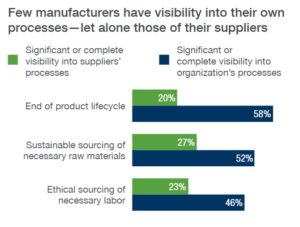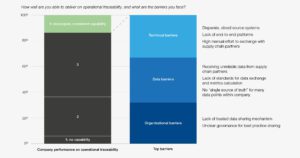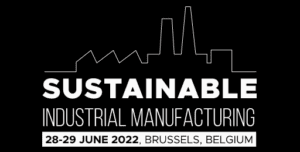Supply Chain Visibility Is Now More Important Than Ever
A version of this article was originally published in Supply Chain Dive.
As consumer demands continue to soar during the COVID-19 pandemic, we’ve seen greater scrutiny around the availability, origin, safety and sustainability of products.
Beyond meeting consumer demand, the growing signs of climate change over the last few years are a clear signal that resource-intensive, wasteful ways of manufacturing products and goods simply can’t continue.
“Ethical and sustainability issues remain a key driver for almost a third of consumers, who claim to have stopped purchasing certain brands due to related concerns,” according to recent research from Deloitte.
This means supply chain visibility is now more important than ever, from food and beverage to furniture and building materials. End-to-end supply chain visibility and traceability, and the ability to track every stage of the product journey from raw materials to the consumer’s doorstep through to the end-life of the product, is now top of mind for manufacturers.
But this can’t be accomplished without the right technologies and digital tools that can capture the information, including data from frontline operations, which can then be quickly analyzed to ultimately improve not just sustainability, but safety, productivity and quality as well.
Supply Chain Visibility Leads to Traceability
When you look at the future of sustainability – net-zero goals to reducing scope 3 emissions – none of it is possible if companies don’t first understand what, when, where, why and how emissions are released, at each stage of the supply chain. Traceability is the underlying foundation.
Understanding traceability can be confusing for different organizations that are now mandated or required to have programs in place to achieve it. What are they actually trying to accomplish?
“When considering a product or a service, traceability can relate to the origin of the materials and parts, the processing history, and distribution and location of the product or service after delivery,” said Liz Sertl in an email, as the senior director of community engagement at GS1 US, a global supply chain standards authority known for the UPC barcode. “Having the ability to speak that same language, whether it’s a definition of traceability or standardizing all the data elements that follow a product across the supply chain, is very important.”
To achieve traceability organizations need to start with visibility. If they have both, manufacturers will be able to accomplish other goals around remanufacturing, reuse and recycling, and other factors that will ultimately enable net-zero goals.
Yet, a survey of supply chain professionals, conducted by SAP and Oxford Economics in early 2021, found that visibility into supplier processes remains low in manufacturing.

Visibility usually stops at the last point of contract. Manufacturers must be able to go back and identify beyond who is the supplier of that last contracting space.
When it comes to traceability, more work needs to be done. In a 2020 survey conducted by the World Economic Forum and Bain & Company, 85% of company executives did not feel their current capabilities allow them to deliver traceability-related use cases consistently. “While most companies have started to build some traceability capabilities, they struggle to integrate them or consistently create value. The most common reasons were data barriers, followed by technical and organizational barriers,” according to the report.

Take food production, for example. The vast majority of supply chains for food manufacturing currently do not have end-to-end traceability from the farmer, who is the source of the raw material, all the way to the final product.
When we think about traceability now, and particularly digital traceability, the question is, can we make sure that as we design traceability systems, we’re designing them in flexible and agile ways so that captured data can drive other sustainability metrics?
Learn more about how Parsable helps industrial companies with their ESG and sustainability efforts.







